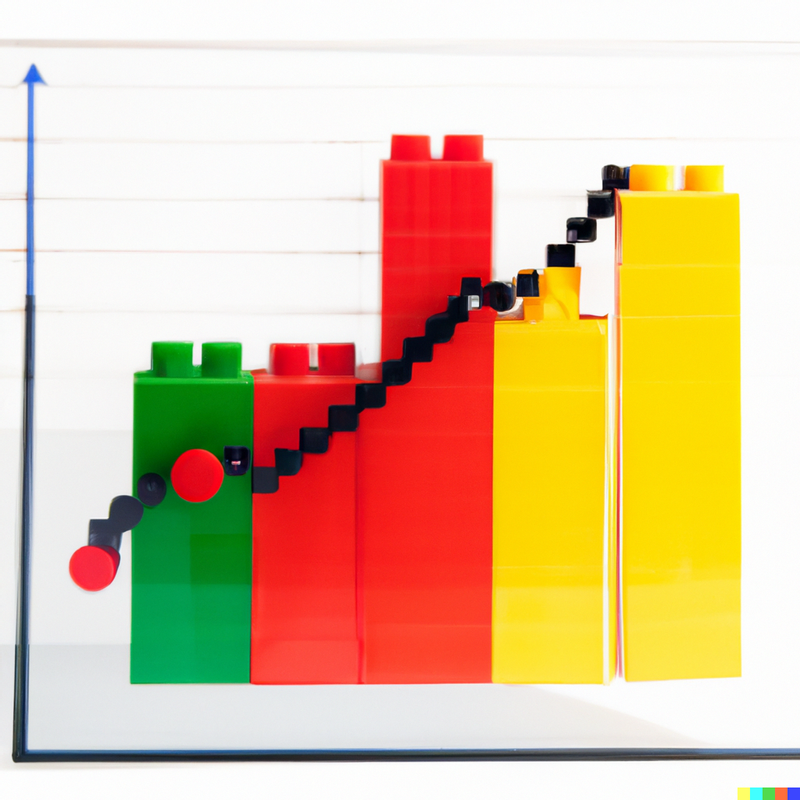
LEGO set numbers are more than just a way to identify a particular set. They can also tell us a lot about the history of LEGO, the different themes that have been released over the years, and even the popularity of certain sets.
LEGO set numbers are assigned in a few different ways, depending on the theme and the year of release.
The first digit of the number indicated the theme, while the last two digits indicated the number of the set within the theme. For example, the set number 6985 is a Space Shuttle from the Space theme, and it is the 85th set in that theme.
The themes were assigned numbers in a somewhat logical way, with the first few digits being reserved for the most popular themes. For example, the Space theme was assigned the number 6, the Castle theme was assigned the number 7, and the City theme was assigned the number 4.
The last two digits of the number were assigned sequentially, starting with 01 and ending with 99. This meant that the sets were numbered in chronological order, regardless of the theme.
LEGO started using 5-digit set numbers in 2009. The first two digits of the number still indicate the theme, but the last three digits are now sequential. This means that the sets are numbered in chronological order, regardless of the theme.
For example, the set number 75192 is the UCS Millennium Falcon from the Star Wars theme, and it is set #192 in that theme.
The first two digits of the number are still assigned in a somewhat logical way, with the first few digits being reserved for the most popular themes. However, the last three digits are now assigned randomly, so there is no way to know the order in which the sets were released just by looking at the set number.
There are also a few special set numbers that don't follow the standard numbering scheme. For example, the set number 10000 is used for exclusive sets that are only available from the LEGO Shop. The set number 21000 is used for Architecture sets, and the set number 30000 is used for polybags.
The genesis of LEGO began with the release of the first LEGO set, the Automatic Binding Brick, in 1949. This pioneer set had the designated set number 1000, marking the start of the LEGO numbering tradition. Progressively, the LEGO sets began to cultivate more extensive and diverse themes, with set numbers gradually increasing.
By 1986, the LEGO set numbers had surged to the high 4-digit range, with the Space Shuttle set designated as 6999 demonstrating this increment. Not long after that, a new milestone was hit in 2007 with the release of the first 5-digit LEGO set number, 75000. This number was reserved for none other than the iconic Millennium Falcon set, an integral addition to the renowned Star Wars LEGO lineup.
Nevertheless, LEGO's numbering system is not strictly sequential. There exists a handful of special set numbers that defy the conventional numbering scheme. The set number 10000, for instance, is exclusively used for limited-edition sets available only from the LEGO Shop. In a similar fashion, the set number 21000 is attributed to Architecture-themed sets, and 30000 is used to denote LEGO polybags.
The distinction of possessing the shortest LEGO set number falls to set number 3003. This is a polybag set, which contains a single minifigure, offering a simplistic contrast to the sprawling and complex multi-thousand piece sets.
In the present day, the LEGO set bearing the lofty number of 10316 sits atop the numbering ranking. This title is held by the Lord of the Rings Rivendell set, released in 2022. The set boasts an impressive count of 5,873 pieces, offering a magnificent rendering of the awe-inspiring Rivendell landscape. Thus, the LEGO numbering system, though intricate, offers a fascinating insight into the growth and evolution of this beloved brand's toy lineup.
The table shows how this process works in practice. In the Prefix column, you see the first two digits of each set's number. Patterns in the theme groupings begin to appear as you scroll down the list.
The more you look, the more clear some of the patterns become.
Keep in mind that this table only shows the breakdown of the sets that Brick Set Price Tracker is currently tracking.
Questions, comments, complaints?
hello@bricksetpricetracker.com